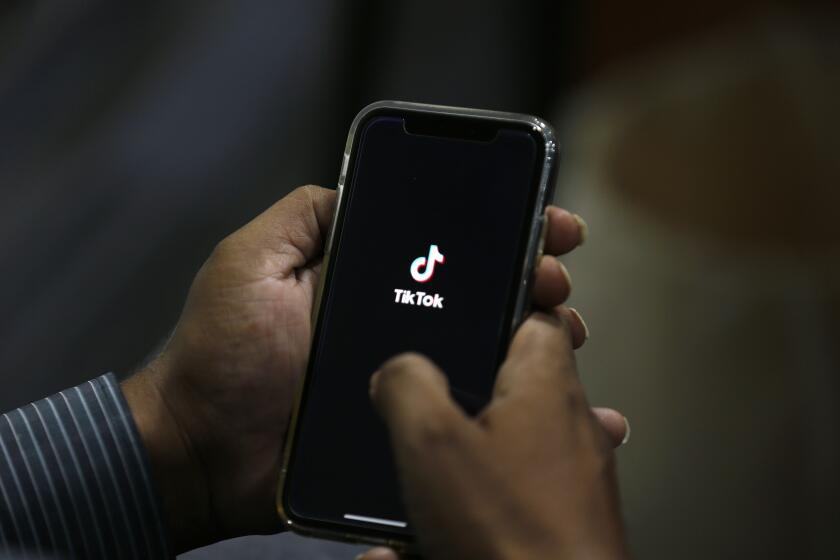Missing: A Digital Immune System
- Share via
The impending breakup of Microsoft Corp.--whether a good idea or not--raises interesting questions about corporate identity. What does it mean to cut a company in two?
In the case of AT&T; Corp. in the 1980s, it was relatively simple: Use geography as a guide and break it up into seven regional service areas and one long-distance company.
But for many companies, the structure is much less clear and much less easily divisible. Microsoft may be such a case.
Take Microsoft’s own notion of a digital nervous system, for example. Basically, it’s the idea that your computer systems are a digital nervous system. Your communications travel up and down from the brain. The hierarchical nature of this is not made explicit, but it’s there.
So dividing a company would mean cutting a brain in half, or leaving one of the new companies without a brain. In this case, it would mean leaving one company without Bill Gates. Will the other shrivel up and die?
We leave that to the courts--and history--to decide.
Instead, let’s think about what would be more robust than a digital nervous system: a digital immune system. An immune system is different from a nervous system in being decentralized, much like the Internet itself. Each body cell, each individual knows its identity locally; it doesn’t need to check back with headquarters to find out how to behave when it encounters a stranger, or when different components interact internally.
Although there’s more need than ever for leadership in companies today, we need the kind of leadership that sets examples and motivates individuals, rather than a central figure who controls everything directly.
That is, a digital immune system is a better model for companies of the 21st century than a digital nervous system.
It all hinges on the technology. One hundred years ago, most companies were simply small, with a limited span of control, most of it in the hands of the owner and his sons. The telephone and various technologies of mass production enabled companies to grow much bigger, with information passed up the ranks and orders passed down.
In short, a digital nervous system.
Then came the Internet. Companies changed both internally and externally. Internally, they become more horizontal, more decentralized. Employees now want to be empowered rather than commanded. More tasks are outsourced, and the employees remaining are expected to be more creative and self-starting, to take more initiative.
Employees want rules and policies, mission and vision, but not necessarily commands from above. Everything from financial incentives to social understandings gives them a bigger say in their companies. They constitute the company; they are not simply representatives of a corporate brain center separate from themselves.
Meanwhile, companies’ external relationships have changed as well. In this new horizontal, fluid world, where vertical integration becomes counterproductive, they need to rely on partnerships and alliances rather than do everything in-house.
At the same time, they need to talk directly to customers rather than send everything through distribution channels; they outsource production and commodity activities and “insource” interaction with their customers. The result is that companies have to be more open and interact at all levels rather than having everything filtered in and out through proper corporate channels: the chairman’s pronouncement; the carefully engineered advertising campaign; the customer inquiries department (“Write to us at P.O. Box 288”).
Instead, employees themselves represent the company--online in-sales and customer service, in responses to e-mail. That means that a company needs to have its identity well-established locally, within each employee. No time to check the rule book or send an e-mail back to the digital nervous system asking for an approved corporate response; besides, the brain couldn’t handle all the variety employees encounter out in the field.
This is what an immune system does: It recognizes foreign objects and produces effective responses.
The biggest problem many companies will face in the future goes well beyond “knowledge management,” which translates roughly into making sure everyone knows the corporate policy manual or corporate procedures, and that as much information as possible is kept accessible on the corporate intranet. An immune system does pattern matching, whereas a digital nervous system processes explicit information.
The challenge is understanding corporate identity at a visceral level: “What are we?” not just “What do we do?” That means that each employee knows how to respond to customer requests--not with a canned response, but with an attitude.
The company of the future will depend not on how well it can manage its people, but how well it can train them to internalize its personality and manage themselves. Thus, a company entering the “new economy” and trying to figure out whom to hire, shouldn’t just steal from IBM or Hewlett-Packard. It should emulate companies that are already used to training hundreds and thousands of people to deal with humanity in all its variety--service companies, retailers, hotels, airlines, anyone who deals with the public.
The only thing that can’t be copied is each company’s unique immune system, because it comes from the interaction of a corporate identity with each of the individuals who works for that corporation--whether in customer support, working with partners, or simply talking about the company online on the Net, or online in a bricks-and-mortar store.
Thus you can divide an immune system without killing it, something you cannot do easily to a nervous system.
What does this mean for Microsoft? It means that the success of any new Microsofts will depend on how successfully they are at embodying the vision, energy and drive of their founder, rather than simply carrying out his commands.
But they will also have to do one more thing a good immune system does: Adapt to a new environment.
*
Esther Dyson edits the technology newsletter Release 1.0 and is the author of the bestseller “Release 2.0.” She is also chairwoman of the Internet Corporation for Assigned Names and Numbers. Questions and comments should be directed to Esther Dyson at edyson@edventure.com.
More to Read
Inside the business of entertainment
The Wide Shot brings you news, analysis and insights on everything from streaming wars to production — and what it all means for the future.
You may occasionally receive promotional content from the Los Angeles Times.










